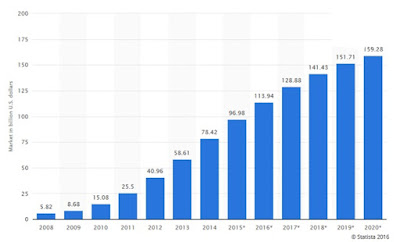Twitter Feed
Cloud Acquisition Strategy, Customized to the Right Cloud Model
by Melvin Greer Managing Director, Greer Institute This year has brought big news, significant changes and increased awareness of the adoption of cloud computing in Government. In fact Cloud computing…
Women leading us to the cloud
By Jodi Kohut Government Cloud Computing Professional By Jodi Kohut Government Cloud Computing Professional March is Women’s History Month. As we celebrate women and their role in our history, our…
CSCC Cloud Privacy Summit – Reston, VA March 26th
Please join the Cloud Standards Customer Council in Reston, Virginia on Thursday, March 26th for the Cloud Privacy Summit. This all day symposium will stimulate lively, interactive discussion and deliver…
Bangladesh: A country transforms with IT
Born out of a nine-month war of liberation in 1971, Bangladesh is a parliamentary democracy and a predominately Muslim country. After years of being a center for textile manufacturing, the country of…
Introducing CloudTek University
Visit us at https://www.CloudTekU.com Cloud Computing Basics https://sqz.co/Fs34AaX Cloud Technologies https://sqz.co/s2ACt68 Cloud Security https://sqz.co/Mp7m3TE Business Innovation https://sqz.co/j4NZb37 Cloud Computing Pilots https://sqz.co/e5HFy24 Cloud Operations https://sqz.co/p5CJo24 CloudTek Overview https://sqz.co/k9S4Ewt ( This content…
The Emerging Science of Digital Forensics
By Melvin Greer Managing Director, Greer Institute for Leadership and Innovation Without question, the rise in cyberleaks, nation-state cyber terrorism and the beach of consumer data across multiple industry domains…
African-Americans and STEM careers: Getting a foot in the door
By Sandra K. Johnson Technology leadership is driven by the innovation and creativity of science, technology, engineering and mathematics (STEM) professionals. STEM careers offer some of the highest-paying jobs and the…
U.S. Department of Defense sets its cloud security guidelines
By Jodi Kohut Those watching federal cloud security in the defense space were pleased to learn the Defense DOD Cloud Computing Security Requirements Guide (v1) (SRG) last month. This 152-page document outlines…
Circles are good for the economy
Contrary to what your mother may have told you, going in circles is sometimes a good thing. When it comes to our economy, it is actually a great thing. Throughout…
2015 National Chief Information Security Officer Survey
Cybersecurity breaches are seemingly making headline news every day. Recent cases have highlighted identity theft, the loss of personal financial data, and the disclosure of sensitive national security information. The…
- Enable cloud service arbitrage based on cost, performance or operational need;
- Help companies migrate operations to the cloud and assist with staff augmentation and training;
- Provide cloud service auditing and SLA monitoring services;
- Help in focusing and managing organizational cloud service demand;
- Provided toolsets to assist in the migration and integration of enterprise applications; and
- Help in change management and the selection and integration of other managed services.
By automating and operationalizing the governance of cloud services, CSBs can efficiently multi-source services and augment them with third party metering and monitoring. Using CSBs, organizations also accelerate their transition to hybrid IT models. This marketplace is typically segmented type of services: cloud brokerage and cloud brokerage enablement, wherein cloud brokerage enablement is further segmented into internal and external brokers. When used internally, cloud enablement platforms helps enterprises adopt the new hybrid IT and multi-sourced operating model. By building organic expertise, companies can personalize IT service consumption and unify
IT service delivery through the use of a corporate self-service store, a dynamic service marketplace, and continuous delivery. This centralized, supply chain approach unifies the order, execution, and management of multi-sourced solutions across legacy and cloud resources, by centrally delegating and tracking execution.
(This post was brought to you by IBM Global Technology Services. For more content like this, visit Point B and Beyond.)
( Thank you. If you enjoyed this article, get free updates by email or RSS – © Copyright Kevin L. Jackson 2016)
Cloud Computing
- CPUcoin Expands CPU/GPU Power Sharing with Cudo Ventures Enterprise Network Partnership
- CPUcoin Expands CPU/GPU Power Sharing with Cudo Ventures Enterprise Network Partnership
- Route1 Announces Q2 2019 Financial Results
- CPUcoin Expands CPU/GPU Power Sharing with Cudo Ventures Enterprise Network Partnership
- ChannelAdvisor to Present at the D.A. Davidson 18th Annual Technology Conference
Cybersecurity
- Route1 Announces Q2 2019 Financial Results
- FIRST US BANCSHARES, INC. DECLARES CASH DIVIDEND
- Business Continuity Management Planning Solution Market is Expected to Grow ~ US$ 1.6 Bn by the end of 2029 - PMR
- Atos delivers Quantum-Learning-as-a-Service to Xofia to enable artificial intelligence solutions
- New Ares IoT Botnet discovered on Android OS based Set-Top Boxes



